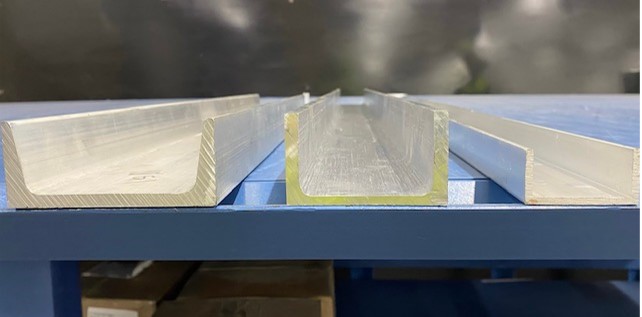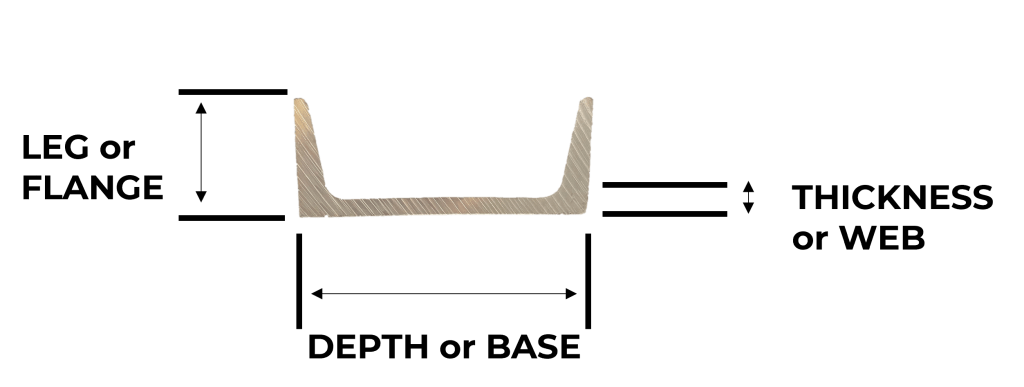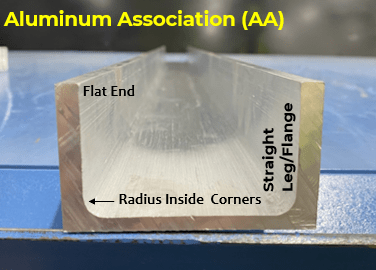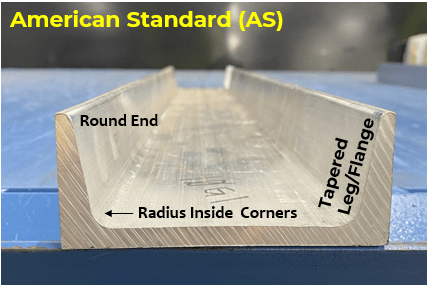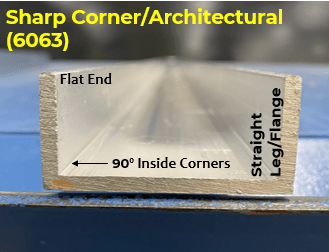Exploring the difference between ferrous and non-ferrous metals reveals a fascinating aspect of material science integral to various industries and technological advancements. Here, we will examine their distinct properties, historical significance, and diverse applications, highlighting how these metals have shaped human civilization. From the early days of copper to the modern use of steel and aluminum, understanding these metals offers valuable insights into their practical uses and their role in historical development.
Ferrous vs Non-Ferrous Metals: A Brief History
Human civilization has always been shaped by its ability to harness and manipulate materials. Among the pivotal categories of materials are ferrous and non-ferrous metals, each playing distinct roles in the development of technologies, industries, and societies
Non-Ferrous Metals
The journey of non-ferrous metals began with the discovery of copper around 5,000 BC, which marked the end of the Stone Age and the onset of the Copper Age. The evolution continued with the invention of bronze, a notable alloy of copper and tin, heralding the Bronze Age. Ancient civilizations utilized lead in various applications such as plumbing and cosmetics. Zinc also played a crucial role, with evidence of its production in ancient India and China dating back to 1400-1000 BCE, where it was used in medicinal applications and brass production. Aluminum, however, remained a rarity until the 19th century due to the complexities in its extraction, until advancements made it more accessible.
Ferrous Metals
The use of ferrous metals, primarily iron, began around 1,200 BC, signaling the start of the Iron Age. Iron production became widespread due to its abundance compared to copper and tin. This transition was significant as iron was more readily available from ore sources, and advancements in smelting and forging made it a versatile and essential material. Iron’s role was pivotal in shaping human civilizations, from being used in tools and weapons to its crucial part in construction and machinery. This metal’s widespread use eventually led to the Industrial Revolution, where iron and steel production became central to industrialization and modernization efforts.
What is Ferrous Metal?
Ferrous metals are primarily made of iron. These metals offer exceptional mechanical properties such as high strength, durability, and the ability to withstand extreme temperatures, making them invaluable in construction, automotive, and machinery manufacturing industries. However, when exposed to moisture and oxygen, their susceptibility to rust and corrosion requires protective measures like coatings or alloys. Despite these drawbacks, ferrous metals remain vital in various applications due to their reliability and performance.
Which Metals Are Ferrous?
Steel
Steel is produced by combining iron with carbon, which strengthens it. Alloy steel becomes even more resilient with the addition of elements like chromium and nickel. The process involves heating and melting iron ore in furnaces and then pouring the molten steel into molds to create steel bars. Steel is found to be extensively used in construction and manufacturing.
Carbon Steel
Carbon steel, with its elevated carbon content, is notably hard, making it a popular choice for manufacturing machine tools, drills, blades, taps, and springs. Its ability to maintain a sharp cutting edge is particularly valued.
Alloy Steel
Alloy steels, which blend elements like chromium, nickel, and titanium, enhance strength and durability without adding extra weight. Stainless steel, a significant alloy steel containing chromium, is crucially used in various applications, including construction, machine tools, and electrical components.
Cast Iron
Cast iron, an alloy comprising iron, carbon, and silicon, is known for its brittleness, hardness, and wear resistance. It finds applications in water pipes, machine tools, automobile engines, and stoves.
Wrought Iron
Wrought iron is an alloy with so little carbon content it’s almost pure iron. During the manufacturing process, some slag is added, giving wrought iron excellent resistance to corrosion and oxidation; however, it is low in hardness and fatigue strength. Wrought iron is used for fencing and railings, agricultural implements, nails, barbed wire, chains, and various ornaments.
Applications of Ferrous Metals
With their exceptional strength, durability, and magnetic properties, ferrous metals find diverse applications across various industries and contribute to the backbone of modern infrastructure and manufacturing.
- Construction: Essential for structural elements like beams and columns, ensuring stability in buildings and bridges.
- Automotive Manufacturing: Used for engine blocks, chassis, and suspension parts, guaranteeing vehicle safety and performance.
- Machinery Manufacturing: Relies on ferrous metals for components like gears and shafts, providing strength and wear resistance for heavy-duty operations.
- Infrastructure Development: Ferrous metals are crucial for pipelines, railways, and power transmission towers. They ensure reliability and longevity for essential systems and foster economic growth and societal advancement.
What is Non-Ferrous Metal?
A non-ferrous metal is a type of metal that does not contain iron in significant amounts or has iron content low enough to be negligible. Unlike ferrous metals, non-ferrous metals lack magnetic properties and are generally more resistant to rust and corrosion, making them ideal for applications exposed to moisture or harsh environments. These metals are essential in several industries, mainly when factors like electrical conductivity, corrosion resistance, and lightweight design are crucial. Their unique properties make them highly sought after in various applications.
Which Metals Are Non-Ferrous?
Aluminum
Aluminum is light, soft, and has limited strength, but it’s easy to cast, forge, machine, and weld. However, it could be better for high-temperature conditions. Its lightweight nature makes it great for aircraft and food can production, castings, pistons, railways, cars, and kitchen tools.
Copper
Copper, with its distinctive red hue, is extremely ductile and malleable and boasts excellent conductivity for electricity and heat. It is primarily used in electrical applications like wiring and conductors. Additionally, it’s utilized in sheet roofing, cartridge cases, statues, and bearings. Moreover, copper is a key component in brass production, an alloy blending copper with zinc.
Lead
Lead is a soft, dense metal with a low melting point and weak tensile strength. Despite this, it can resist corrosion from moisture and various acids. Lead is widely used in electrical cables, batteries, construction, and soldering applications.
Zinc
Zinc has moderate to low strength and a notably low melting point. While it’s easy to machine, caution is needed when heating to prevent crystal cleavage. Its primary use is galvanizing, where a zinc coating is applied to iron or steel to prevent rust.
Tin
Tin, known for its softness, malleability, and low tensile strength, is commonly used to coat steel and create tinplate steel for food cans. While tin foil was once famous for food wrapping, aluminum foil has largely replaced it. Tin can also be combined with copper to form tin brass and bronze alloys.
Applications of Non-Ferrous Metals
Non-ferrous metals, prized for their diverse properties and resistance to corrosion, play essential roles in a wide range of industries and contribute to developing advanced technologies and everyday essentials.
- Electrical and Electronics: Their excellent conductivity makes them ideal for wiring and circuitry, ensuring efficiency and reliability.
- Aerospace and Aviation: Rely on lightweight metals like aluminum and titanium for fuel-efficient aircraft components that meet stringent performance standards.
- Marine: In corrosive environments, non-ferrous metals like stainless steel and aluminum are preferred for structures, ensuring longevity and reliability.
- Food and Beverage Industry: These metals are valued for their hygienic properties and resistance to corrosion, with stainless steel being favored for food-grade equipment due to its ease of cleaning and sterilization.
Ferrous vs Non-Ferrous: In Comparison
Metals are broadly categorized into ferrous, rich in iron and offering strength but prone to corrosion, and non-ferrous, iron-free with qualities such as corrosion resistance and conductivity. Whether you require ferrous metals’ durability or non-ferrous metals’ resistance and conductivity, Fast Metals provides a wide range of metal materials.
Visit our online shop to find your project’s ideal ferrous or non-ferrous metal.
| Ferrous Metals | Non-Ferrous Metals | |
| Iron Content | Ferrous metals have a high iron content, usually over 50% by weight. | Non-ferrous metals have minimal iron, typically less than 50%. |
| Magnetic Properties | Have high magnetic properties | Non-magnetic |
| Corrosion Susceptibility | Their iron content makes them prone to rust and corrosion, with the exemption of stainless steel and wrought iron. | Good resistance to rust and corrosion is beneficial in applications where moisture is a factor (ex: roofing, gutters, piping, etc.) |
| Density | Denser and Heavier | Lighter and less dense |
| Strength and Durability | Strong, durable, and used for structural and load-bearing purposes. | Metals like copper and aluminum are excellent at conducting electricity and heat. |
Shop Now at FastMetals — Your One-Stop Online Metal Shop!
Discover the convenience and efficiency of FastMetals! Catering primarily to fabricators, artists, hobbyists, and DIY enthusiasts, FastMetals offers instant pricing, same-day shipping, and no minimum order requirements — all at the click of a button!
Visit FastMetals now for your ferrous vs non-ferrous metal needs. Every order, big or small, is met with precision and care. Start your seamless shopping experience today!

